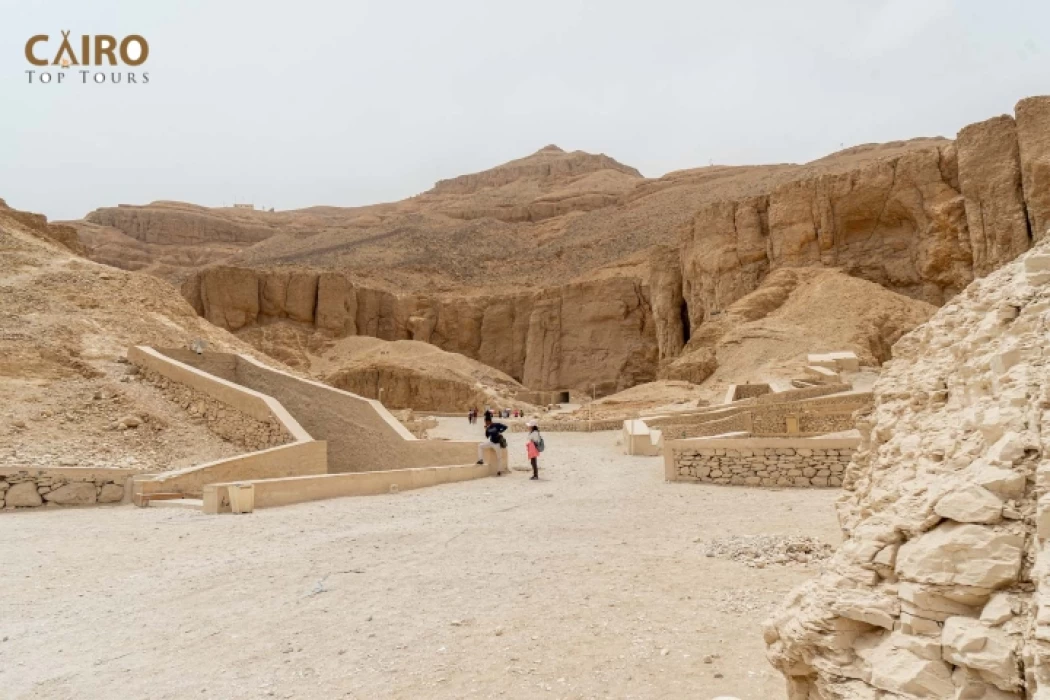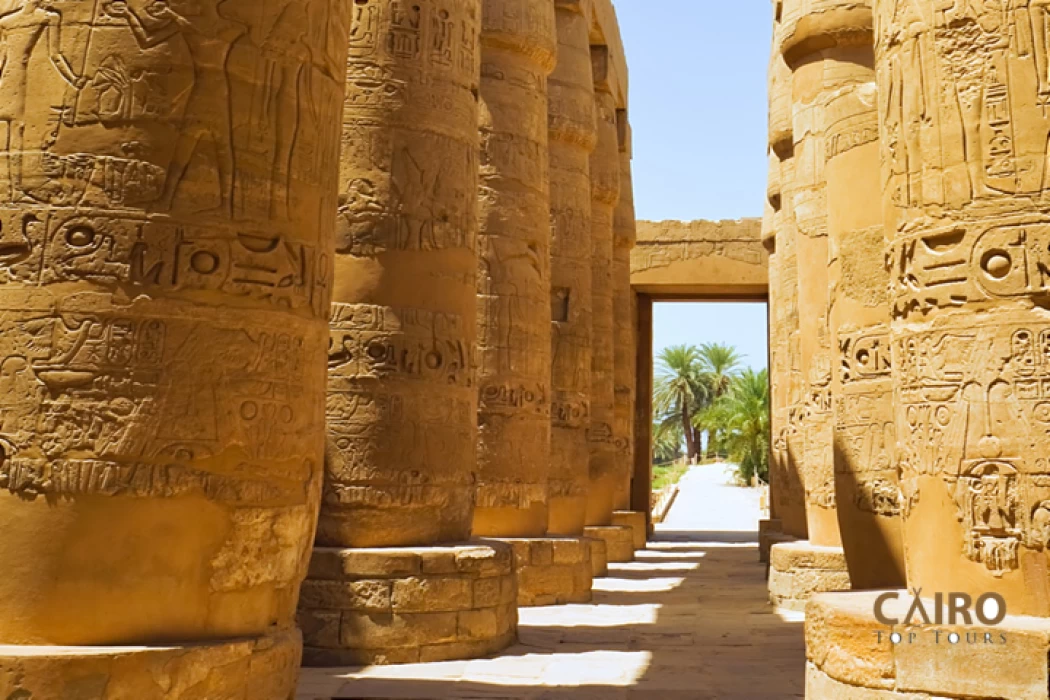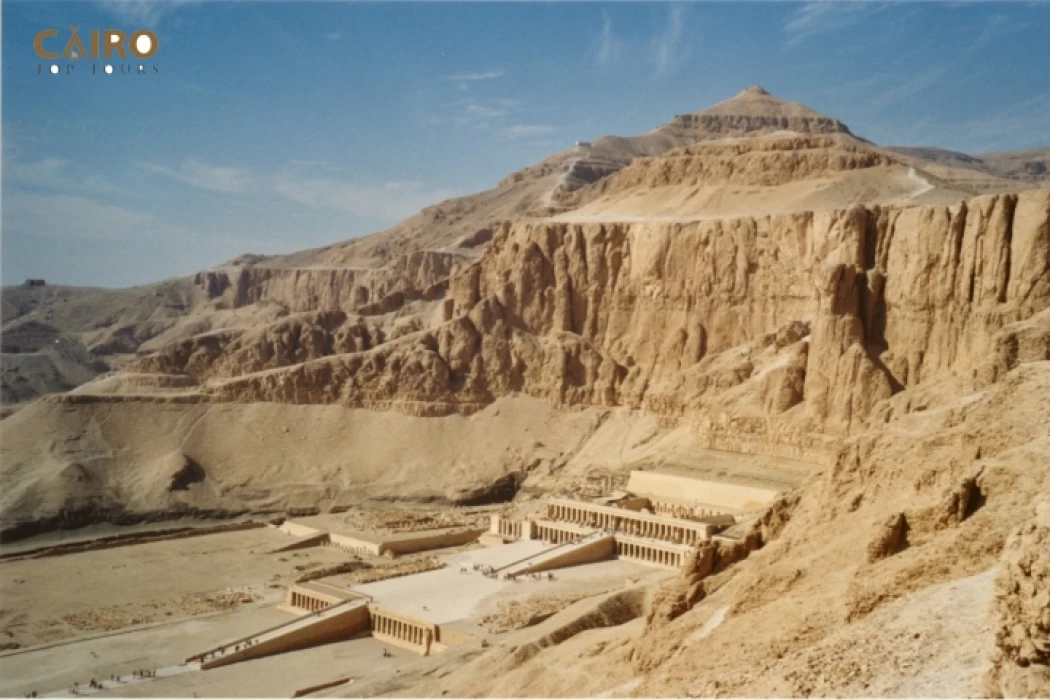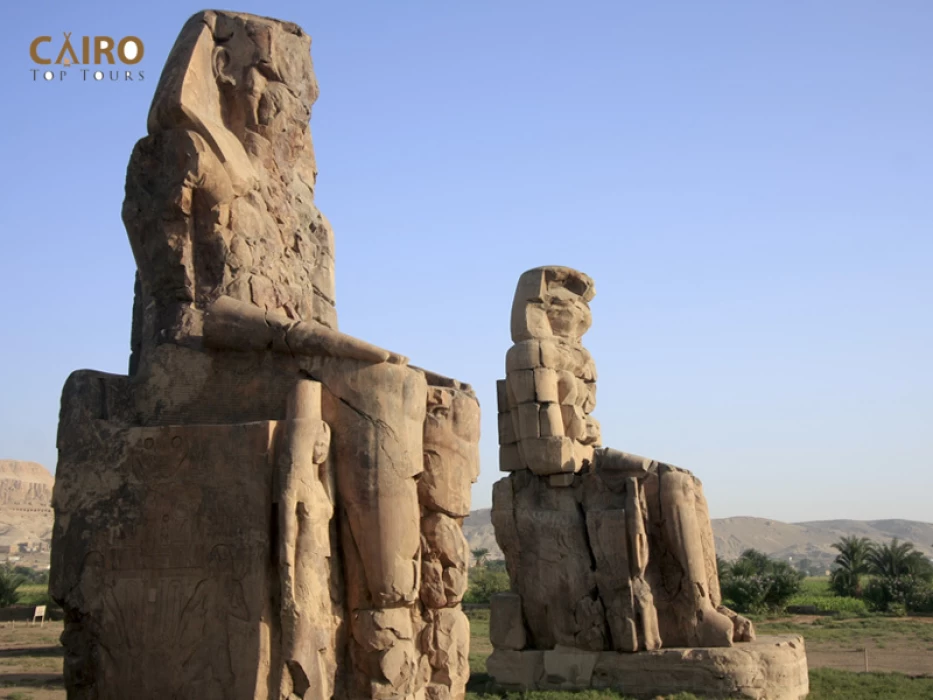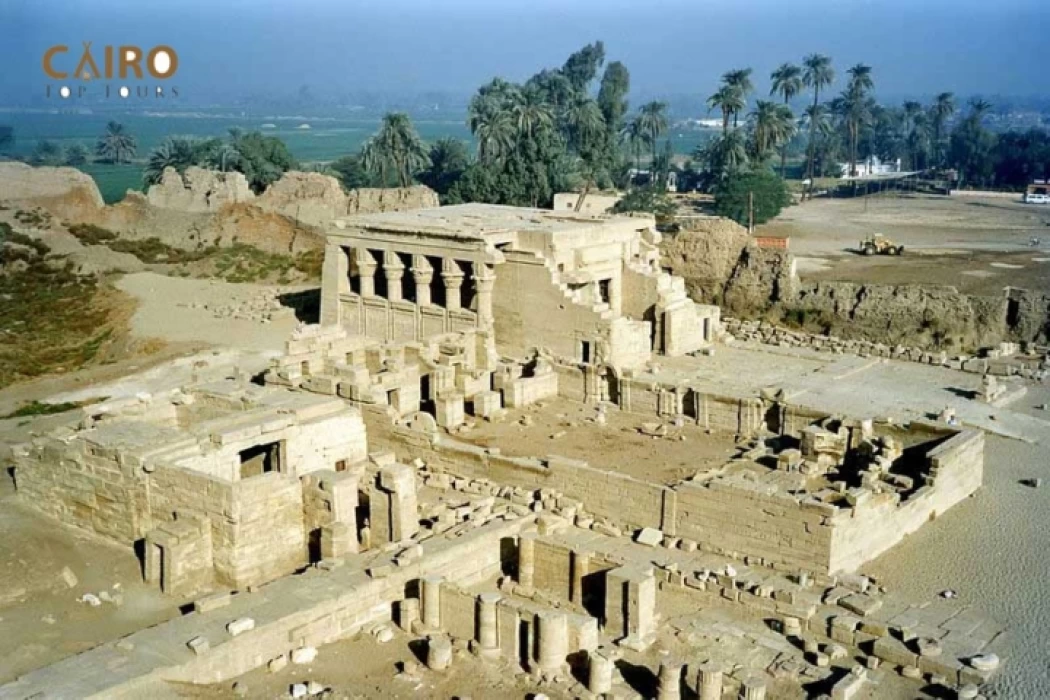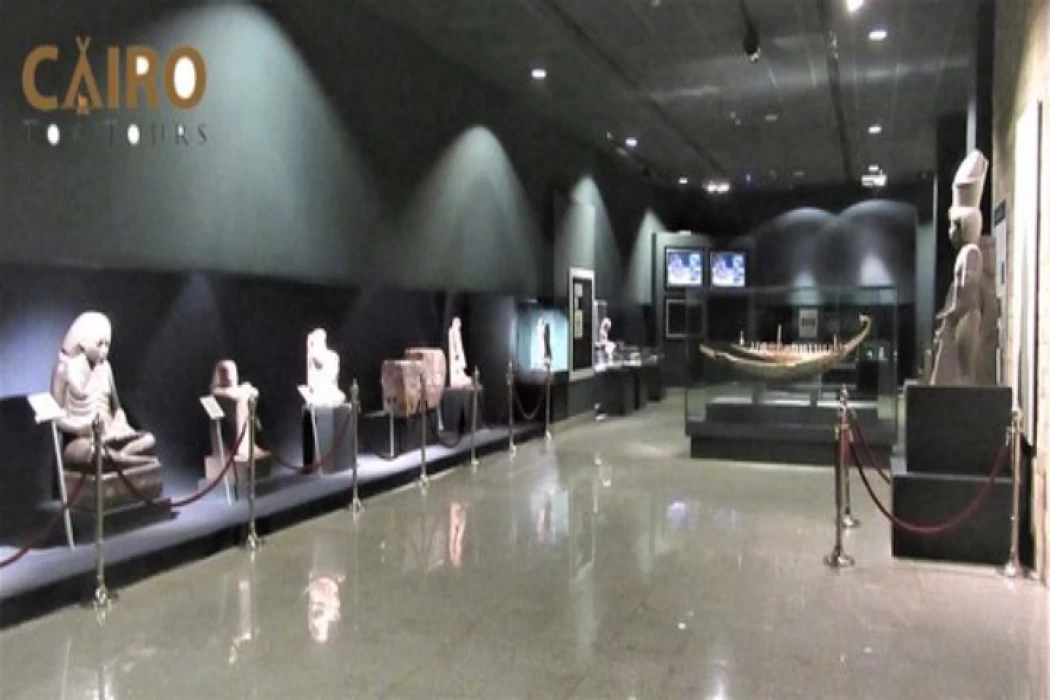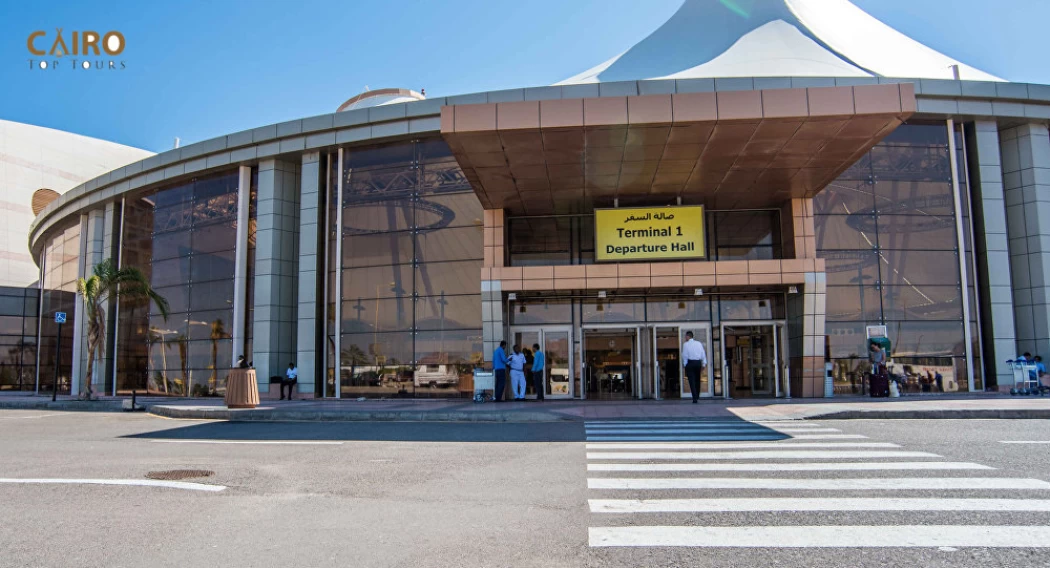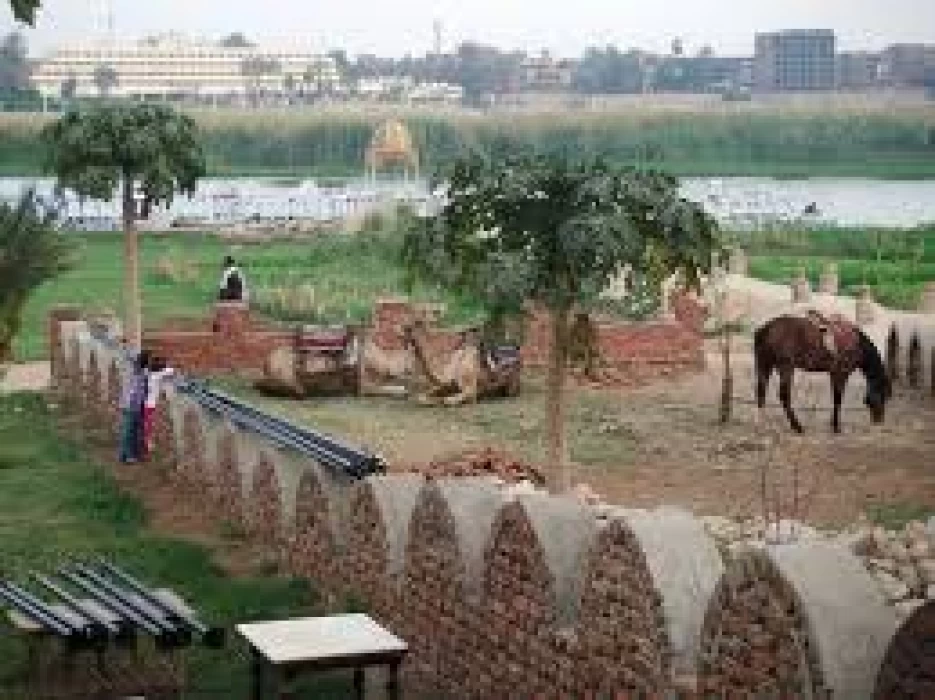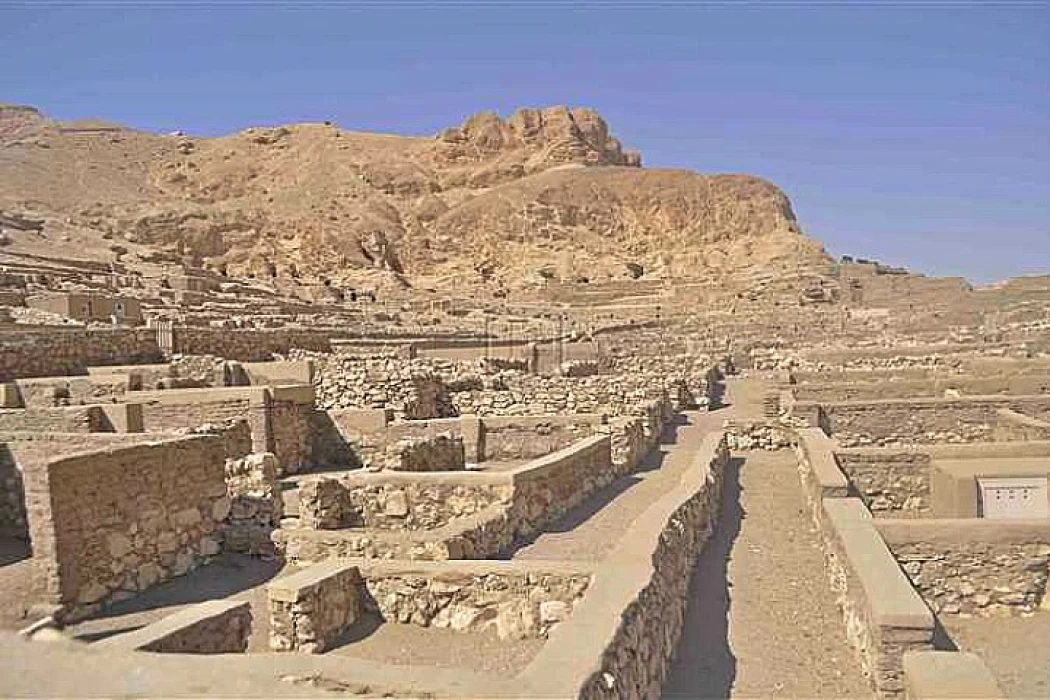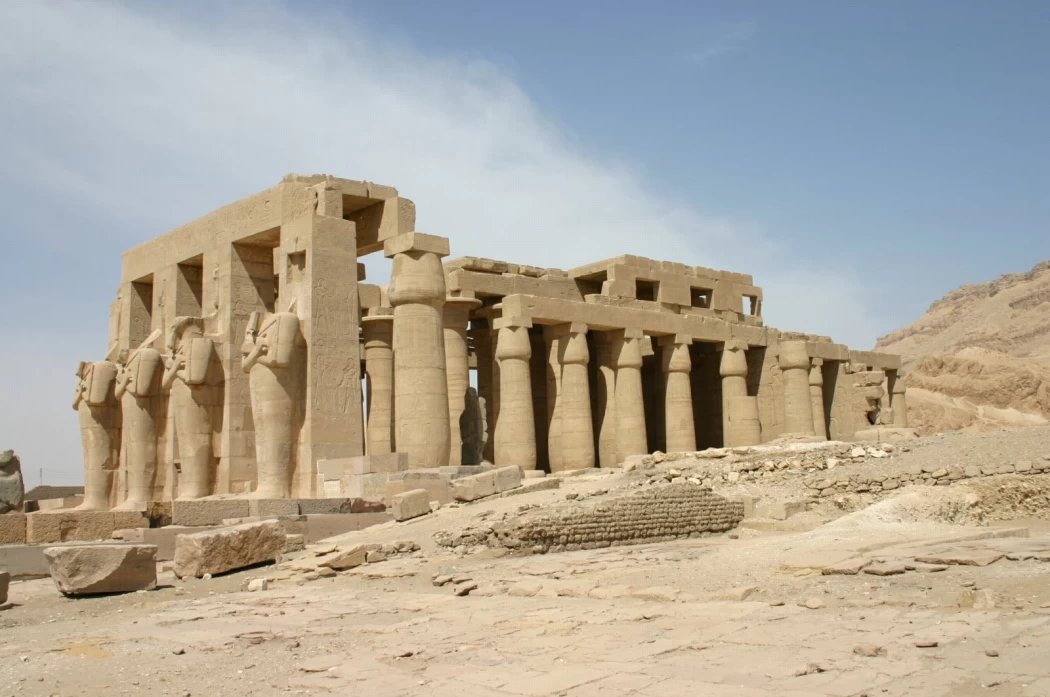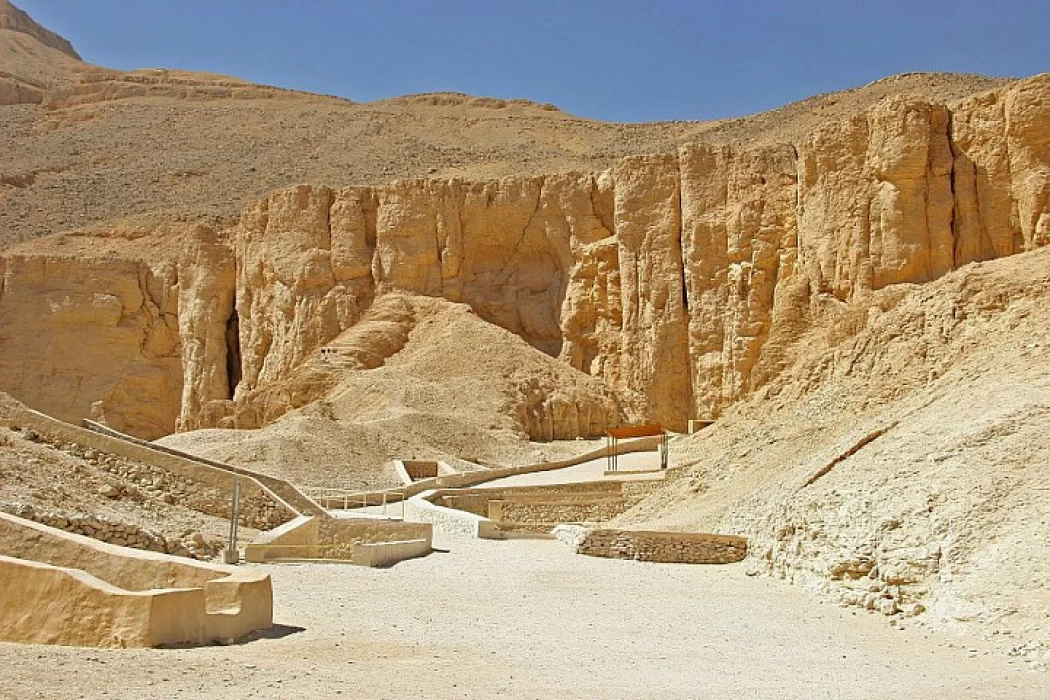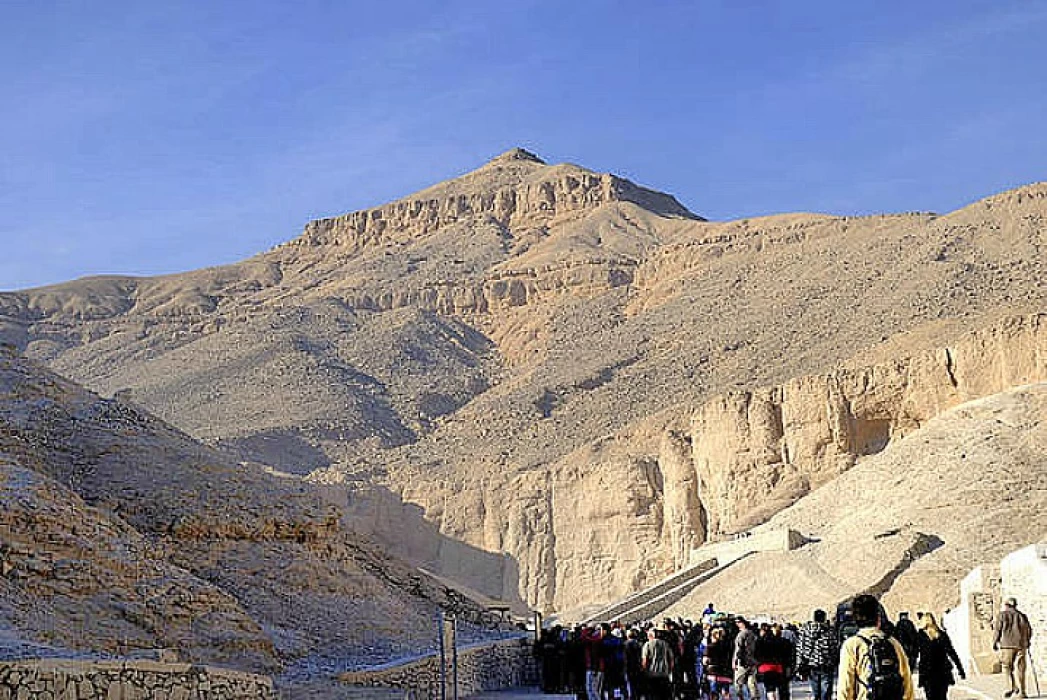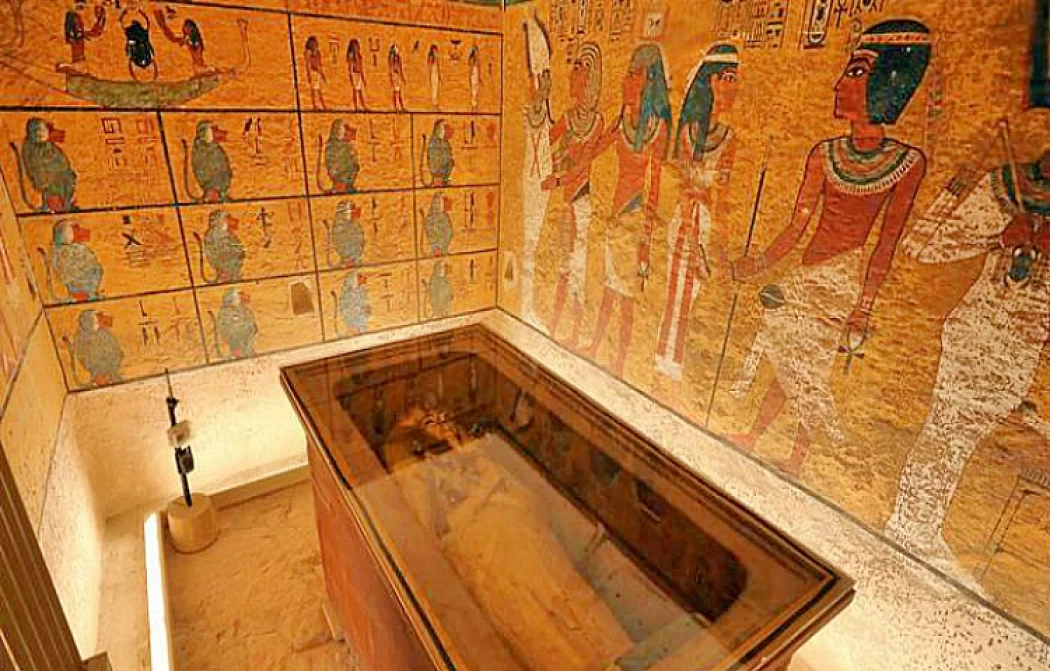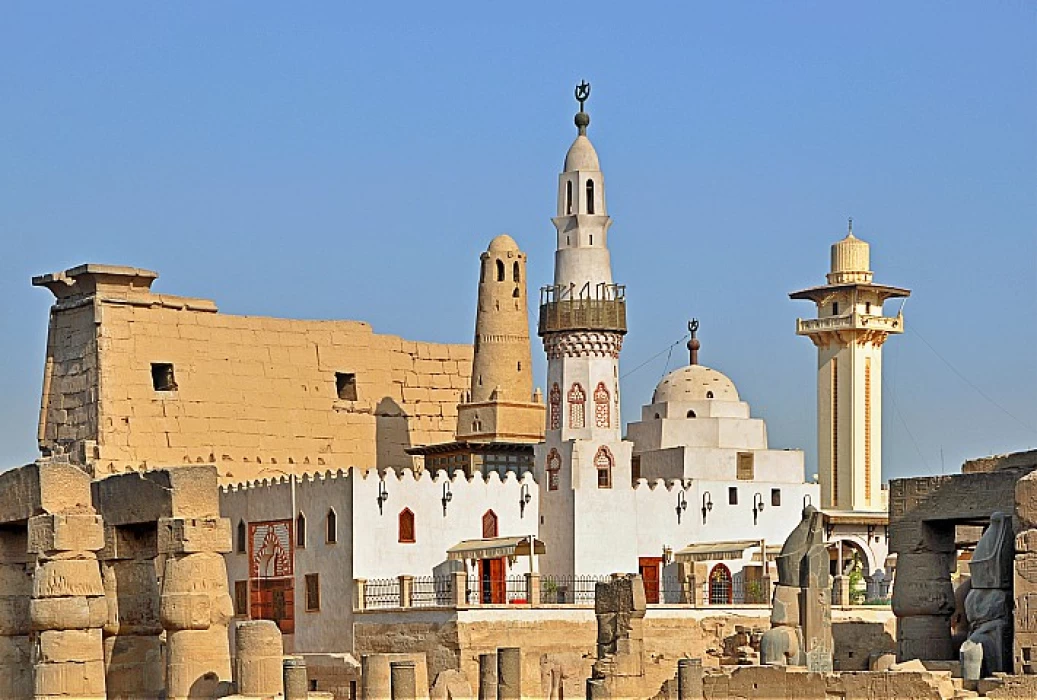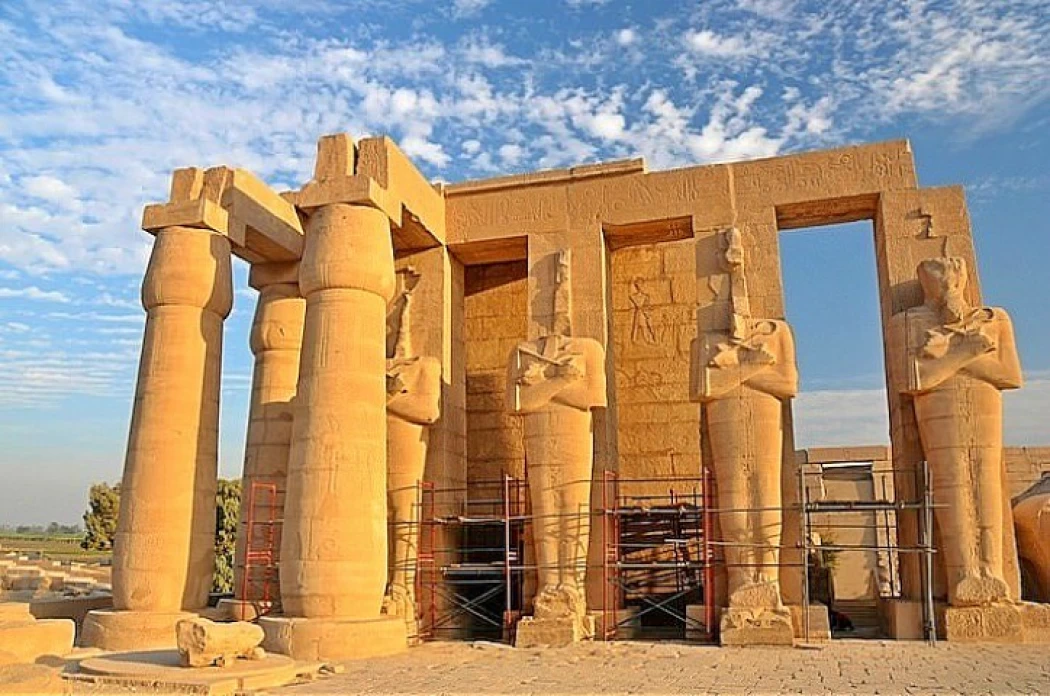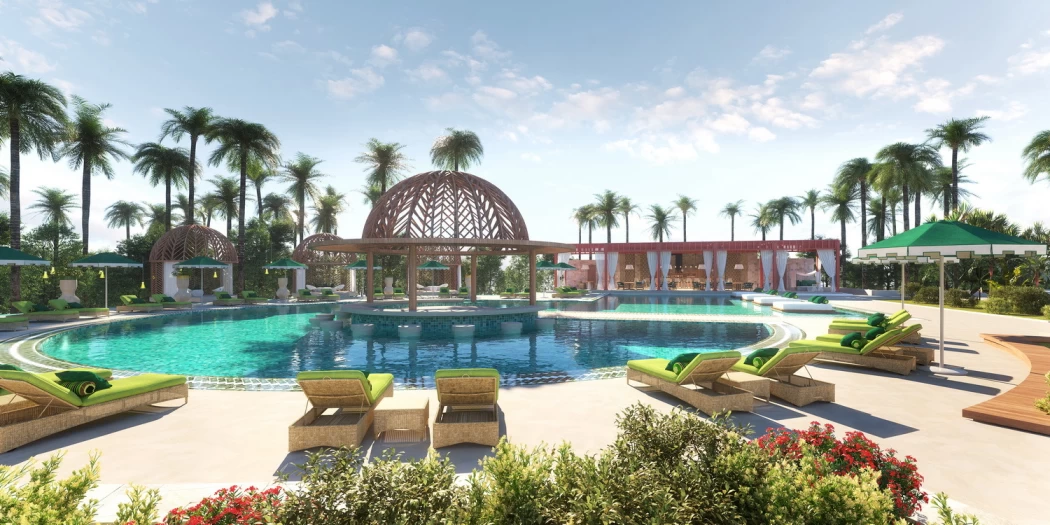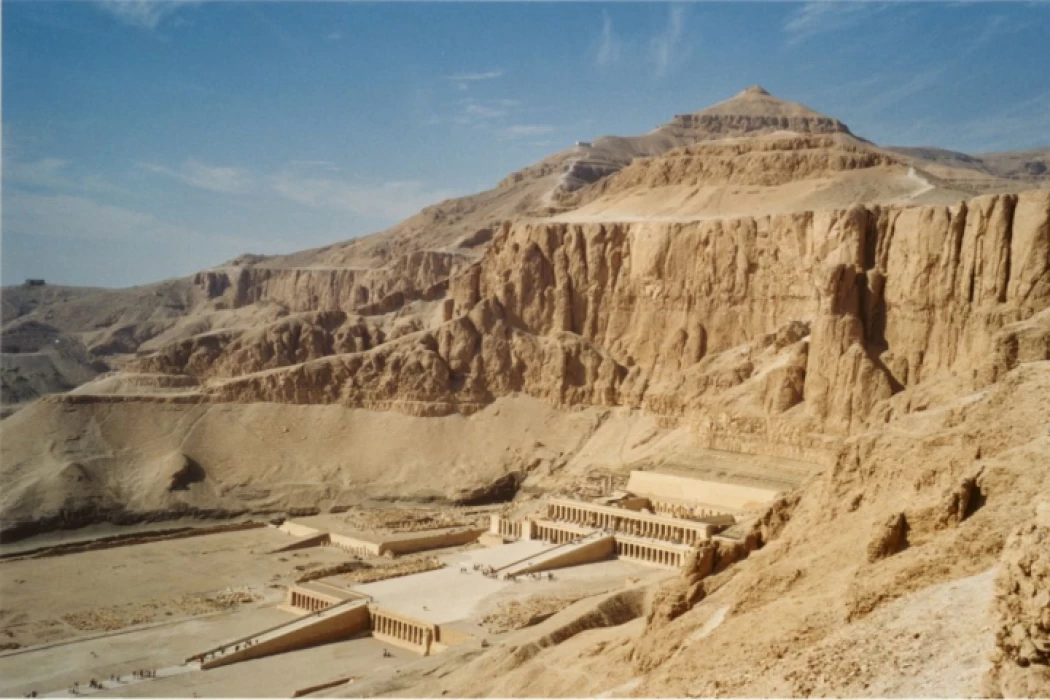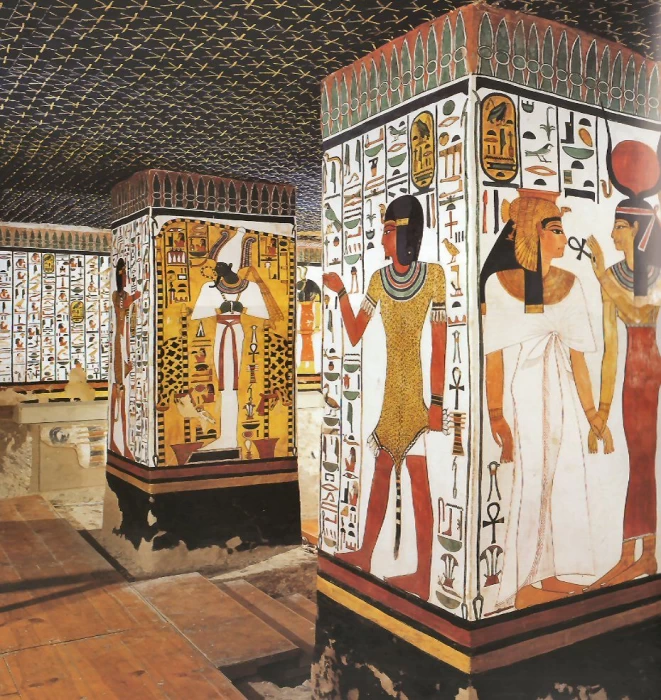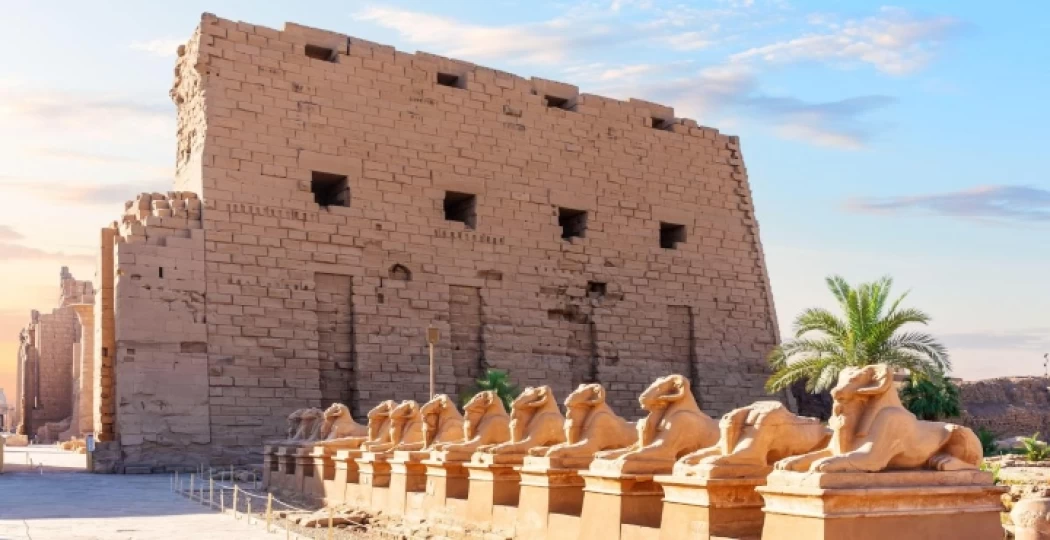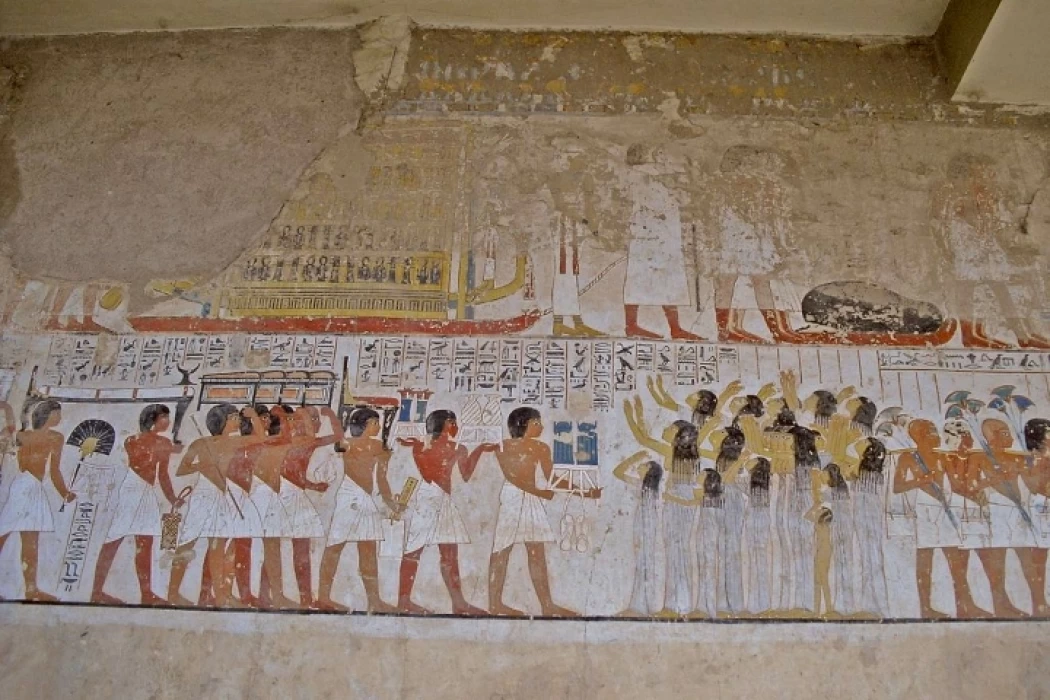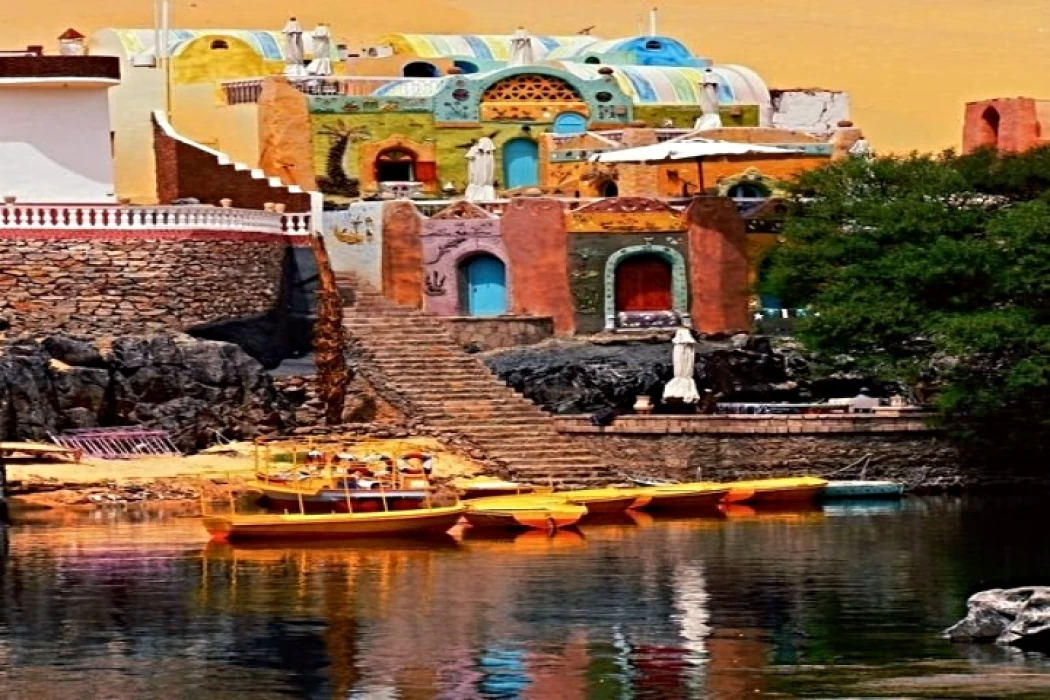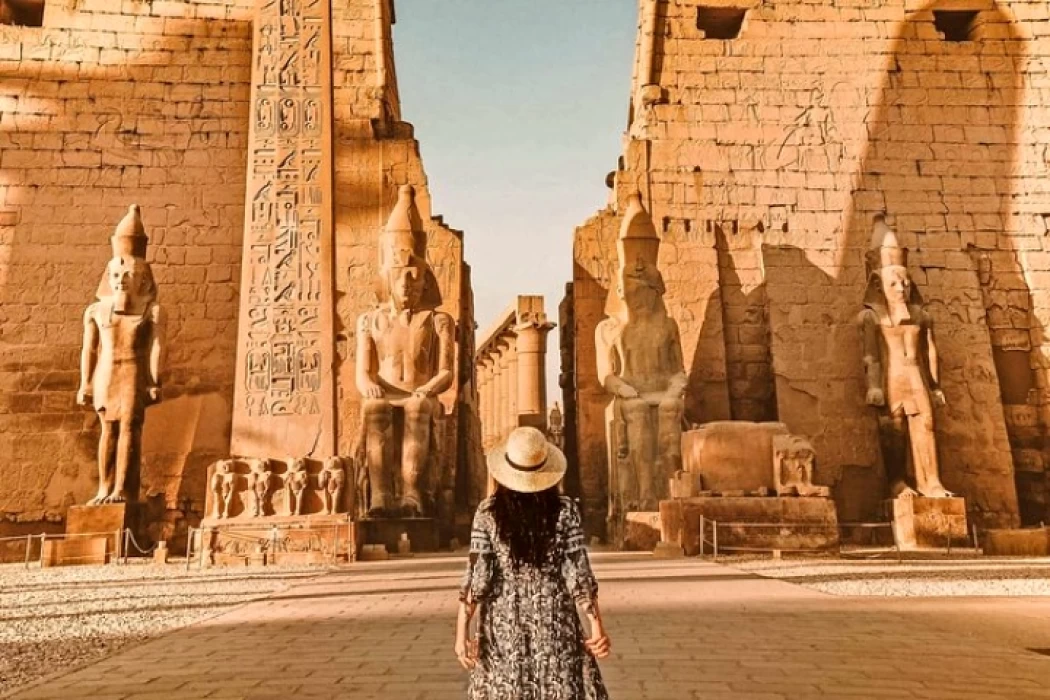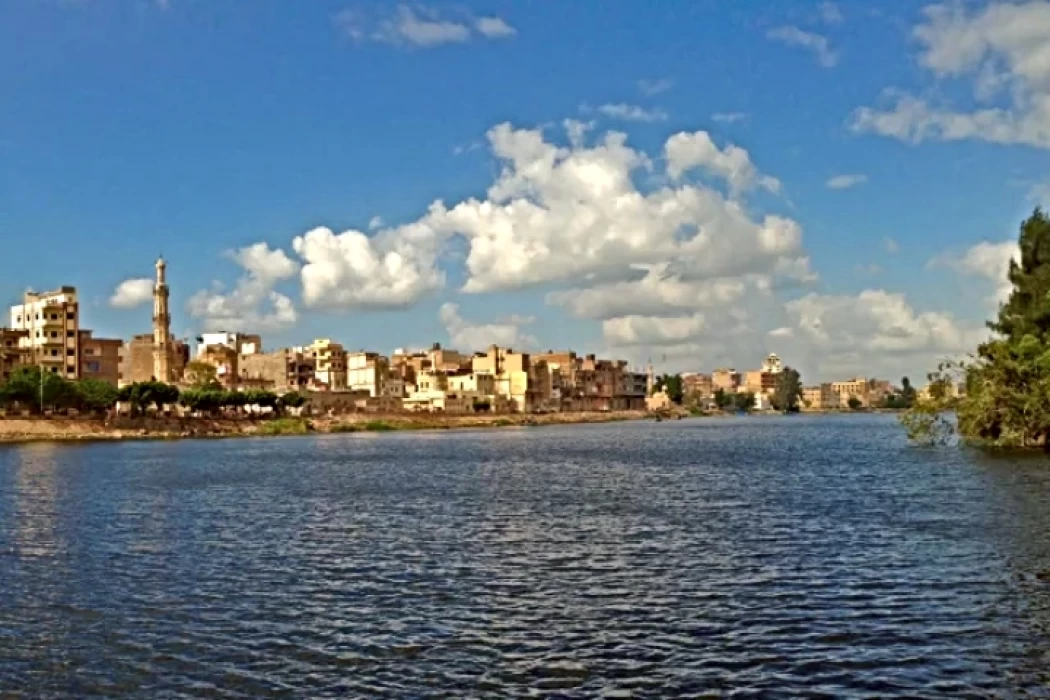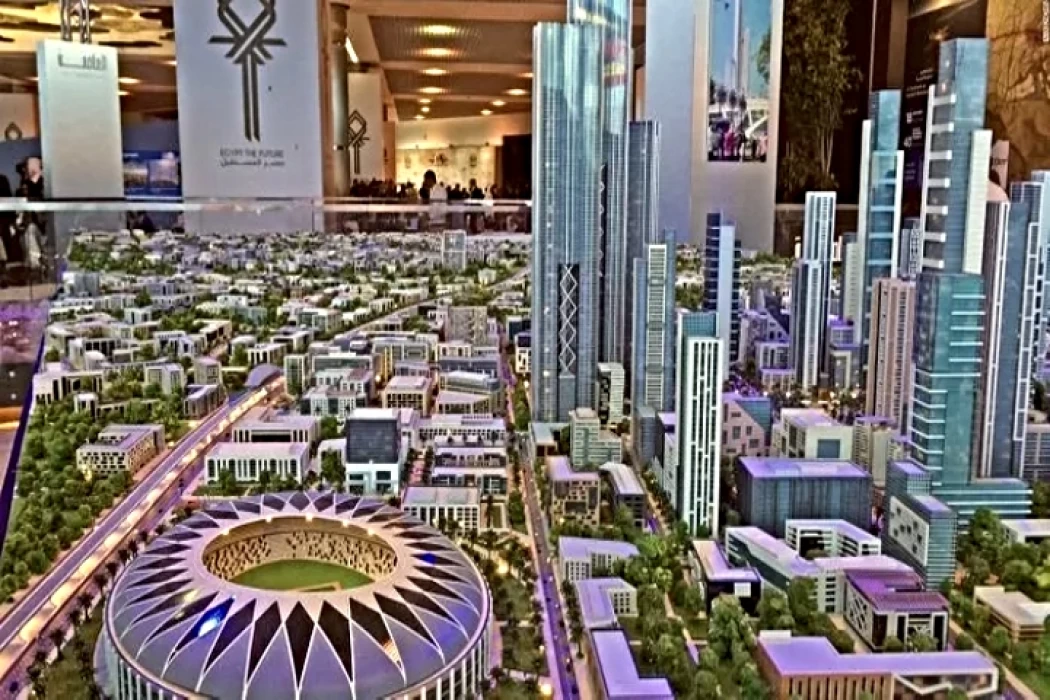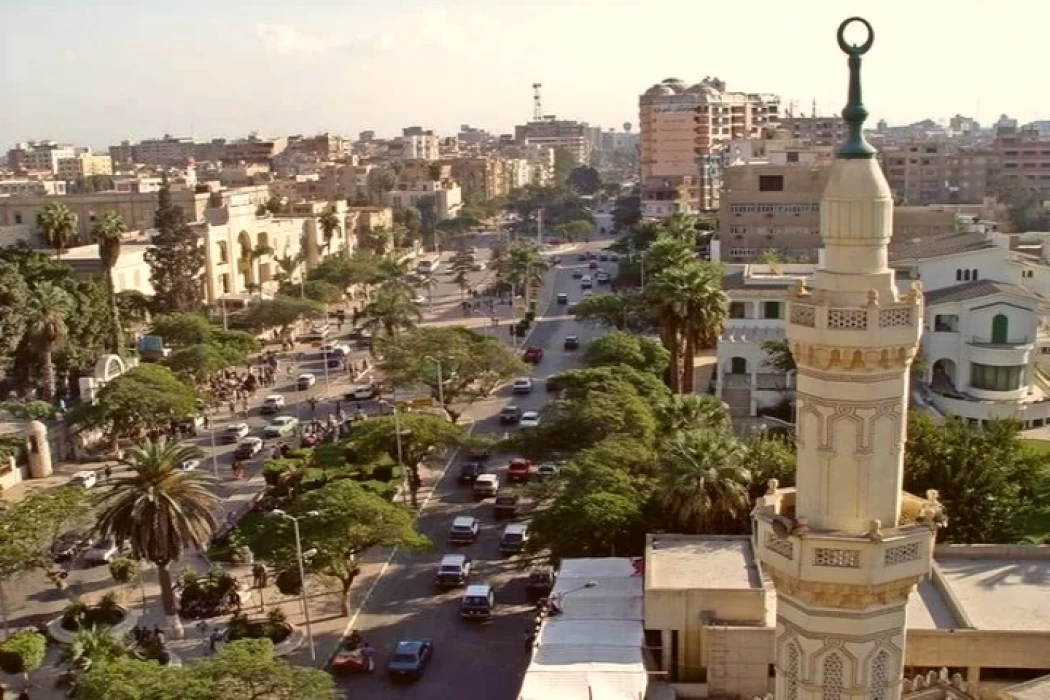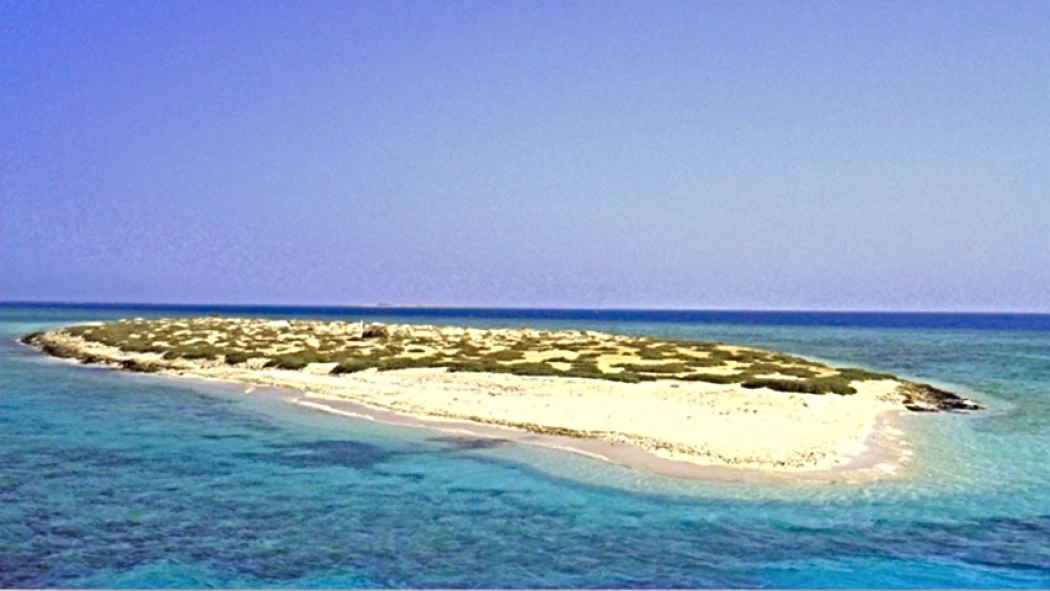Admin
Travel to Egypt is synonymous with a visit to the Valley of the Kings, where more than 63 royal tombs rest, among them the most prominent pharaohs of the New Empire - 18th, 19th and 20th Dynasties.
Admin
Karnak Temple | The Largest Egyptian Temple
The Karnak Temple is the largest and one of the most important temples in Egypt, and one of the largest pharaonic kingdoms in Egypt, as it provides a rich record of the Egyptian civilization from the Middle Kingdom to the Ptolemaic period, spanning about 2000 years.
Admin
The Mortuary Temple Of Hatshepsut At Deir El-Bahri
The Hatshepsut Temple at Deir El-Bahri is one of Egypt's most characteristic temples and the most distinguishing temple on earth. The Temple of Hatshepsut was commissioned by a lady who governed Egypt with a policy. At King Hatshesut's daughter, Tutmosis I, the temple was completed. It was made of calestone to honour the accomplishments of the great Queen Hatshepsut (18th Dynasty).
Admin
Colossi of Memnon
The Colossi of Memnon belongs to King Amenhotep III, who supervised its construction by the famous architect Amenhotep bin Hapu, and in the past, there was an ancient funerary temple for King Amenhotep III, of it nothing remains except the two statues, which are about 21.90 meters high, and are considered part of an agenda. Tourist attractions for foreigners who enjoy Luxor and its monuments.
Admin
Temple of Dendera
The temple of Dendera is located in the southeast of the city of Dendera, It has been dedicated to the goddess of love, happiness, and beauty "Hathor”. constructed on the Greco-Roman architectural style. The temple was formerly known as the House of Hathor and is considered one of the largest religious temples.
Admin
Temple of Madinet Habu
Built as a burial temple, the Medinet Habu temple in Luxor was intended to house the worship of several Egyptian deities in addition to the pharaohs Ramses III and II. As one of the most significant and powerful pharaohs of the XX dynasty, King Ramses III personally gave the order to have it constructed.
Admin
Luxor museum
Though relatively tiny in comparison to other Egyptian museums, the Luxor Museum offers a great representation of ancient Thebes' art and history. Ancient Egyptian military artifacts, jewelry, sculptures, and mummies are among the exhibits kept in this museum. The reconstructed wall of the temple of Kernak from Ahkenaton's time, which displays his unique creative style, is among the collection's most priceless items.
Admin
Luxor International Airport
During your Egypt Travel Packages, Egypt Day Tours, or even while on a Nile Tour in Egypt, you will make advantage of the Luxor International Airport amenities upon arrival or departure.
Admin
The beautiful Banana Island in Luxor | Gizerat El Mozah in Luxor
It is one of the unique islands that surround the Nile River in the great city of Luxor which is one of the richest cities in the world with the artifacts and monuments of the ancient Egyptian civilization. To reach Banan Island, you will enjoy the traditional boat ride to reach the Island which is distinguished by the Bananas trees that cover it.
Admin
Deir El-Medina in Luxor
Deir al-Madina, located in Luxor's western mainland, is very significant because it contains worker tombs that reveal the social standing of the individuals interred there. These workers oversaw the kings' and queens' tombs' excavation and engraving. The region was given the name "Deir al-Madina" due to the presence of a medieval monastery.
Admin
The Ramesseum in Luxor
Among the funeral temples constructed in ancient Egypt for the deceased is the Ramesseum Temple. constructed for the greatest monarch to have temples erected, King Ramses II. Massive statues of King Ramses II can be found in the temple, along with inscriptions that shed light on the nature of life at the time and the events of the well-known Battle of Kadesh, which saw King Ramses II defeat the Hittites. The inscriptions also detail the events leading up to the battle and his strategy for winning.
Admin
Valley of the Queens
The wives and princes of various nobility buried the pharaoh in the Queen's valley, which was located on the west bank of Luxor, close to the Kings' valley.
Admin
Valley of the Nobles
A neighborhood in the Valley of the Nobles inhabited by nobility. After the Kings Valley and Queens Valley, where the nobility follows the kings and priests, this cemetery is the best.
Admin
Tutankhamun's Tomb: Treasures of the Young Pharaoh
Tutankhamun's Tomb, located in the Valley of the Kings, was discovered in 1922 by Howard Carter and is renowned for its remarkable preservation and wealth of artifacts. Belonging to the young pharaoh Tutankhamun, who ruled from 1332 to 1323 BCE, the tomb contained an array of treasures, including the iconic gold funerary mask. Its discovery shed light on ancient Egyptian burial customs and the opulence of royal life, making it one of the most significant archaeological finds in history and a symbol of Egypt's rich heritage.
Admin
The Mosque of Abu'l Haggag at Luxor Temple
Abu El-Haggag Mosque, a 19th-century mosque in Luxor, Egypt, is named after Sufi saint Abu El-Haggag. Built on the ruins of the ancient Temple of Karnak, it features traditional Islamic architecture, a beautiful minaret, and intricate decorations. The mosque is a significant spiritual site and hosts an annual festival honoring the saint, attracting both pilgrims and tourists. It combines Islamic and ancient Egyptian heritage.
Admin
Ramesseum Temple
The Ramesseum Temple, located in the Luxor Governorate, is a significant Pharaonic temple built by King Ramses II. It features numerous statues of the monarch and inscriptions detailing life in the Pharaonic realm during that time.
Admin
Sofitel Winter Palace Luxor - Historic Hotels
Five stars may be found at the Sofitel Winter Palace Hotel. It was constructed in 1886 and includes 86 rooms and six suites. It is situated south of Luxor Temple on the banks of the Nile River in Luxor, Egypt. This magnificent building was constructed by the British in 1886. Throughout history, monarchs and explorers have favored the Sofitel Winter Palace Hotel, which is situated in the center of a verdant tropical garden on the banks of the Nile River. It is a peaceful haven that showcases the treasures of Pharaonic history.
Admin
The Royal Cache at Deir el-Bahri
The three temples in Deir al-Bahri are its most famous archaeological monuments, dating back to the first Central State and to the Ptolemaic era, and the temple of Hatshepsut is the most famous of them. Built between 1473 and 1458 BC, the Temple of Hatshepsut is in a much better state than other temples, still maintaining its condition and construction, and Hshepsut is the Queen of Egypt, and is one of the scariest queens in the ancient civilization of Egypt.
Admin
The discovery of King Tut's tomb
The 18th Dynasty tomb of Tutankhamun, discovered by Howard Carter in 1922, is the only complete and undisturbed royal burial in the Valley of the Kings worldwide. On November 4, 1922, the sarcophagus of the Golden King was opened, and on February 16, 1923, British archaeologist Howard Carter entered his coffin room, which had never been accessed in over 3000 years of history. The tomb of Tutankhamun contained over 5000 artifacts.
Admin
Tomb of Queen Nefertari
Nefertari's tomb is one of the creations of historical monuments built by the kings of the ancient Egyptian dynasties and became international archaeological attractions that are visited by tourists coming from different countries of the world to enjoy these interesting stories from inside the temples. Luxor's historical tombs, including "Nefertari's Tomb" No. 66 in the Valley of the Queens, are awe-inspiring. Discovered in 1904 by an Italian expedition, the tomb, which spans over 520 meters, features intricate inscriptions and colors, showcasing the love and devotion of King Ramses II.
Admin
Reviving Luxor's ancient “Road of the Rams”
The Rams Road, a 2700-meter long road connecting Luxor Temple to Karnak Temple, is set to be completed soon. The road, which connects the two temples, has been meticulously prepared for its completion. The opening ceremony, attended by leaders and officials from around the world, is considered one of the greatest historical works. The Kabash Road project, a crucial national project, is being pursued by the Ministry of Tourism and Antiquities to expedite its completion and become a global tourist attraction.
Admin
Tomb of Ramosa in Luxor | Tombs of The Nobles Luxor
The tomb of Vizier Rammuza is one of the largest tombs excavated in Mount Qurna. The tomb was not used or even buried in it, as it was not completed, due to the fact that the minister left the rule of the city of Thebes and went to rule in Tel el-Amarna with King Akhenaten during his religious revolution as in the religion of the ancient Egyptians and to show the development of sculpture in ancient Egypt.
